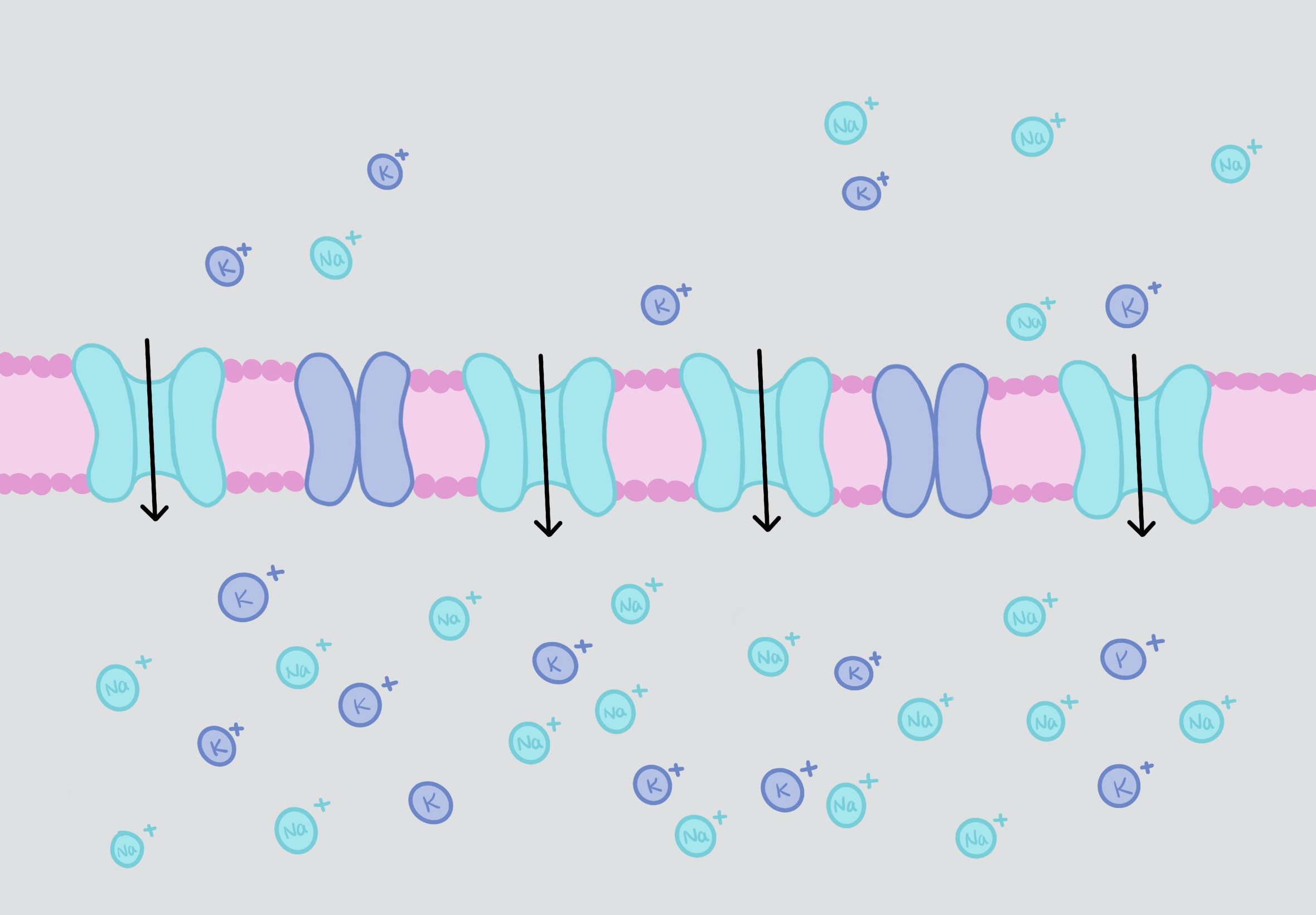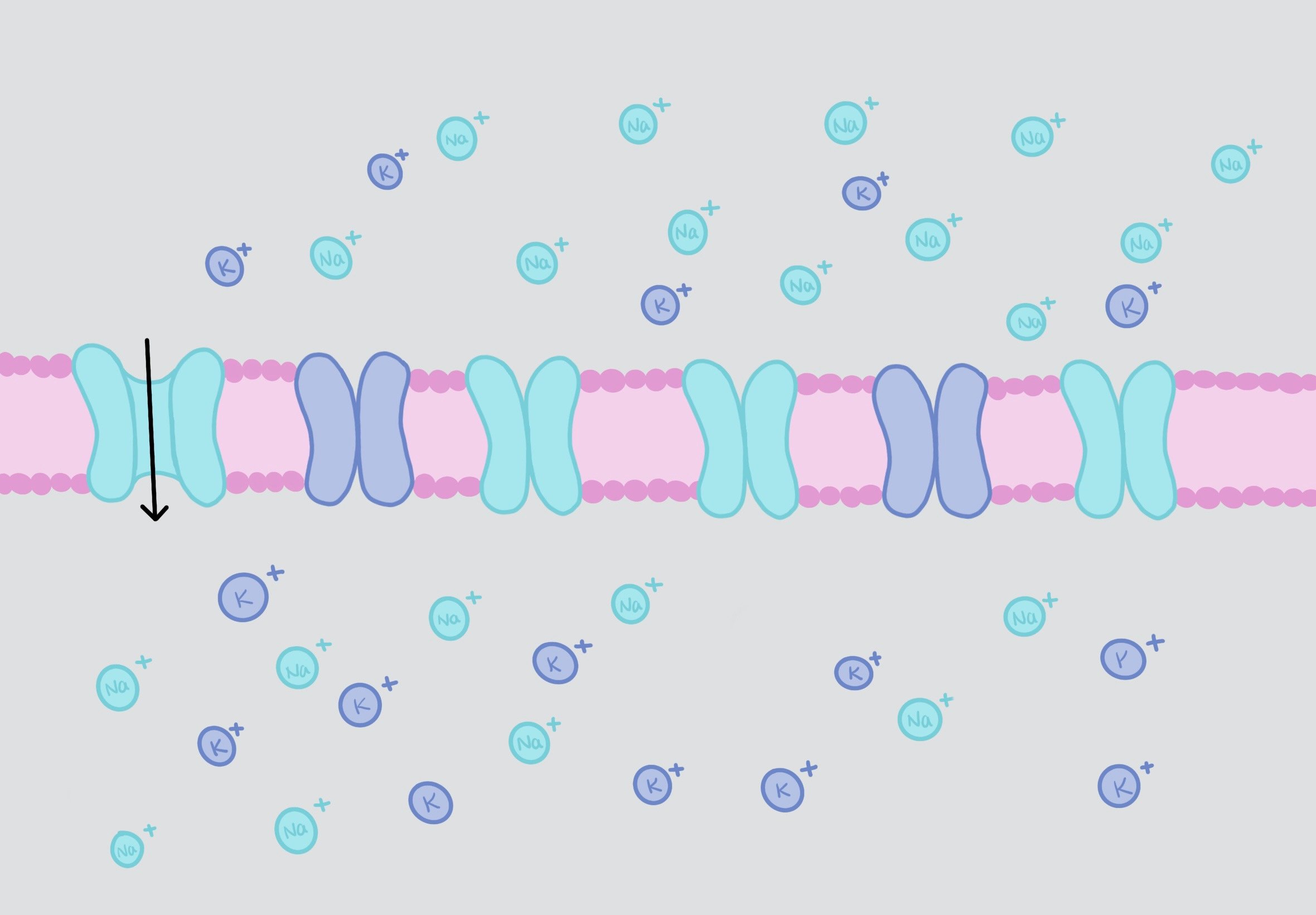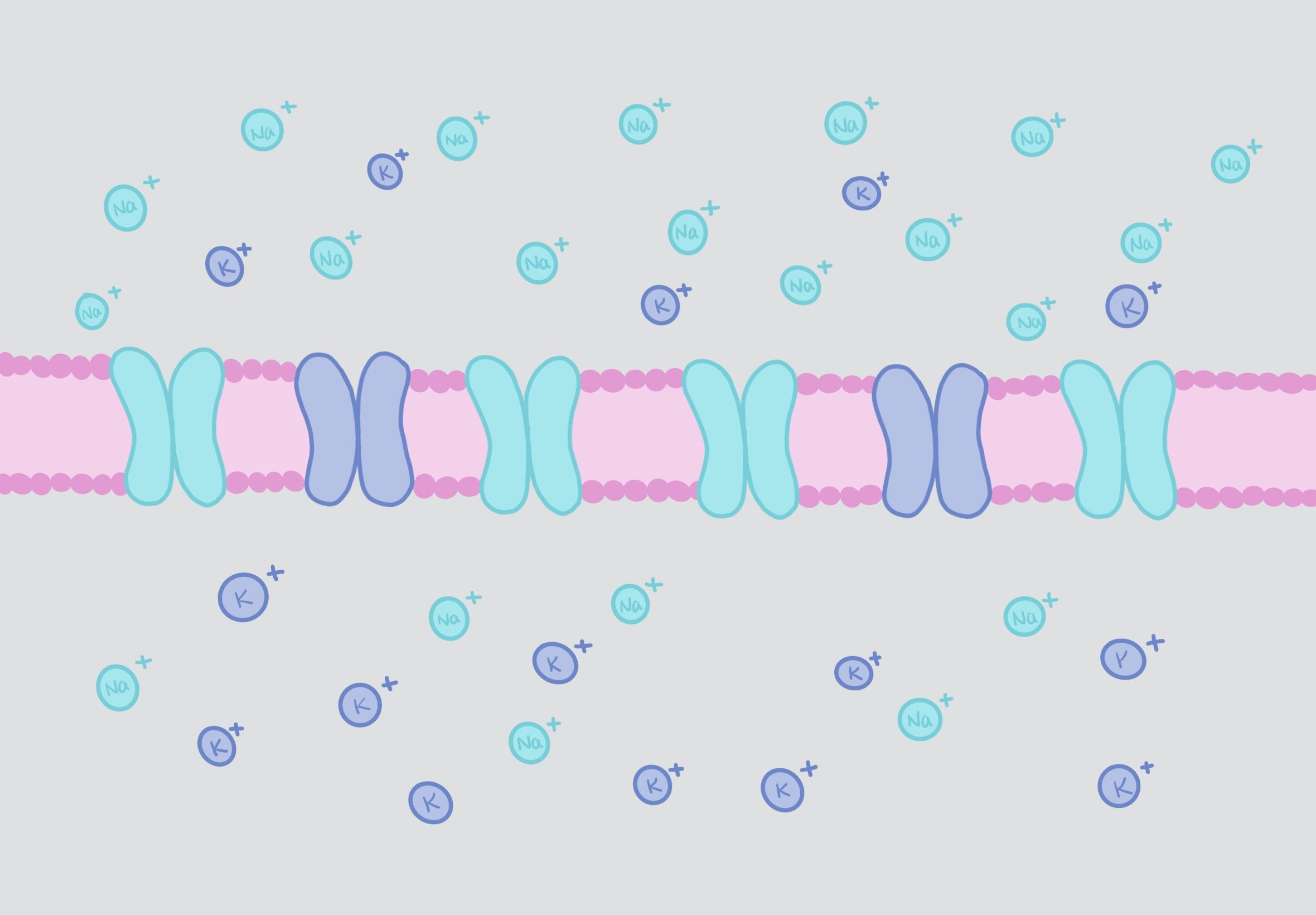Action Potentials
Ions: Electrical Communication
Ions are atoms or molecules that have a positive or negative charge. In the body, biological processes and communication are largely controlled by the flow of ions through different structures and systems. The foundation of this communication is that positive charges are attracted to negative charges (opposites attract) and positive charges are repelled by positive charges (and vice versa).
Action Potentials
Ion Gradients
Action potentials are caused by the flow of different ions across a neuron’s membrane, guided by the opening and closing of ion channels. When the neuron receives the information, in the form of a stimulus, sodium channels open, allowing sodium to flow into the cell. As sodium flows into the cell, the inside becomes more positively charged (increasing the membrane potential). Once the membrane potential reaches a certain number (called the threshold), this causes more sodium channels to open, triggering the action potential. These sodium ions then flow down the axon, towards the axon terminals, where they cause neurotransmitters to be released.
One of the ways that the flow of ions is controlled in the body is through gradients. There are two different types of gradients: charge gradient and concentration gradient.
Action potentials are the foundation of communication between neurons. The generation of an action potential in a neuron can cause many downstream actions in other neurons, allowing them to send and receive messages across the body.
Ion Channels
The cell membrane of a neuron serves as a barrier between the outside of the cell (extracellular environment) and the inside of the cell. In order to cross from one side of the cell membrane to the other side, ions need to travel through channels built into the cell membrane. These channels control the flow of ions from one side to the other, opening in response to specific stimuli.
When a neuron is not communicating with other neurons, it is said to be at rest. When at rest, the neuron is negatively charged, meaning it contains more negatively charged ions than the area surrounding the neuron. Like other cells, a neuron has a cell membrane that separates the inside of the cell (intracellular) from the outside environment (extracellular). This membrane contains the ions within the neuron, causing the cell to have a negative charge at rest, which is also known as the resting membrane potential.
A concentration gradient is formed when there is a greater concentration (amount) of molecules on one side of a barrier than on the other side. When the barrier is open, these molecules will flow down their concentration gradient, or in other words try to equalize the amount of molecules on both sides.
A charge gradient is formed when there is a difference in charge across a barrier (like a cell membrane). An example of this would be that one side of a barrier has a greater amount of positive charge than the other side. If the barrier is open to allow positive charge to flow through, then the positive charge would flow towards the negative charge until each side has an equal charge.
Sodium and potassium channels are the most important channels for neuron communication. Sodium channels only allow sodium ions to flow through them, and potassium ions only allow potassium to flow through them. Action potentials are largely controlled by the flow of these two ions, sodium and potassium, both of which have a positive charge. At rest, there are more potassium ions inside the neuron and more sodium ions outside the neuron, creating a concentration gradient between the intracellular and extracellular environments. When sodium or potassium channels open, the ions either flow towards negatively charged ions (opposite attract) or down their concentration gradient.
It is important that the neuron returns to its negative resting membrane potential, resetting for future action potentials. Therefore, once a certain amount of sodium has entered the cell, potassium channels open allowing for potassium to leave the cell. Potassium is repelled by the positive charge of the sodium inside the cell. This decreases the charge inside the neuron, bringing it back to its resting membrane potential.
1) Stimulus causes sodium channels to open, sodium flows into the cell
2) The influx of sodium triggers an action potential, causing more sodium channels to open
3) Sodium channels close and potassium channels open, potassium to flow out of the cell
4) Potassium channels close and the cell returns to rest
An action potential occurs when information is sent down the axon of a neuron. The transmission of an action potential down the axon causes neurotransmitters or other signaling molecules to be released from axon terminals, carrying the information to other neurons and cells.









